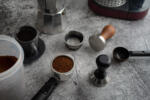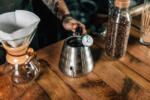Did the chicken come first or the egg?
In Mexico, there are two drinks called Tequila and Mezcal. What’s the difference? Aren’t they both alcohol? There’s a saying, “All tequila is mezcal, but not all mezcal is tequila.”
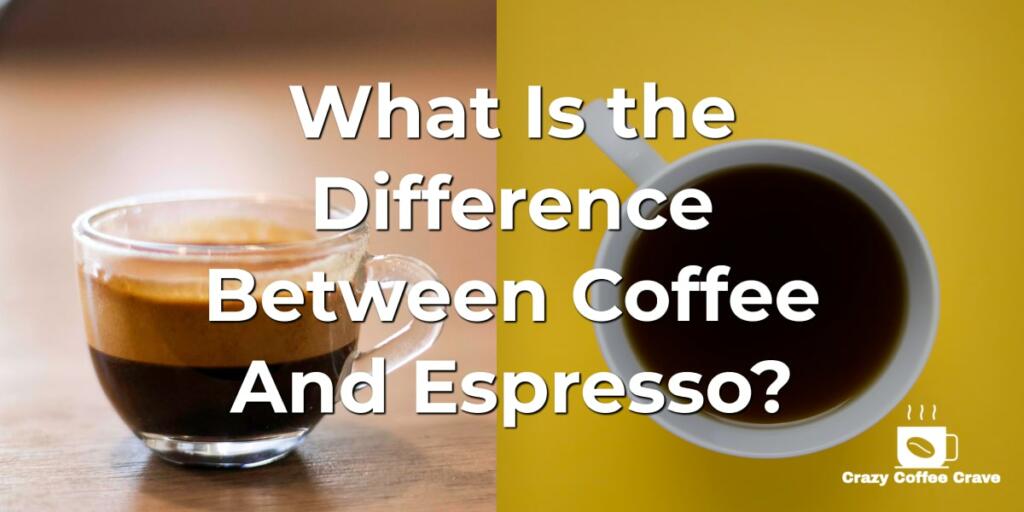
Let’s just stop with the explanation and figure out the difference between coffee and espresso.
Hold on? Isn’t Espresso, Coffee?
The liquid extracted from the bean is coffee, but the preparation is not.
Consider the different methods you use to prepare coffee. For example, you might want French press coffee, pour-over coffee, stovetop percolator coffee, etc.
So back to where we started.
All espresso is coffee, but not all coffee is espresso. 🙂
The beans used to make espresso is not different bean, despite roasters having special processes designated for espresso. Many roasters might also prefer using high-quality robusta beans to add some extra caffeine to the beverage.
So, what’s the big difference between coffee and espresso

Why are we still on this topic? Trust me; once you read this article, you’ll appreciate how it’s being made.
What sets apart espresso from coffee is its preparation. Other coffee-making methods take time to brew because they rely on slowly filtering hot water through your grounds. At that very moment, those several minutes are the difference between coffee and espresso.
Espresso machines pressurize and shoot boiling water through coffee beans. This method gives you that liquid gold, complex, aromatic, and caffeine packed into a tiny cup in 30 seconds.
So let’s take a look at
Pressure
Filtered coffee uses gravity to push the water through the grounds to make your cup of coffee. If you use a Moka Pot or a French press, the pressure is still applied to the water and the coffee.
Many espresso machines default to nine bars, equivalent to 130 pounds per square inch (PSI). Here’s something to visualize:
Dive 300 feet deep into the ocean, allowing you to experience optimal espresso pressure. This is why espresso is brewed quickly and packs a punch
The anatomy of an espresso shot
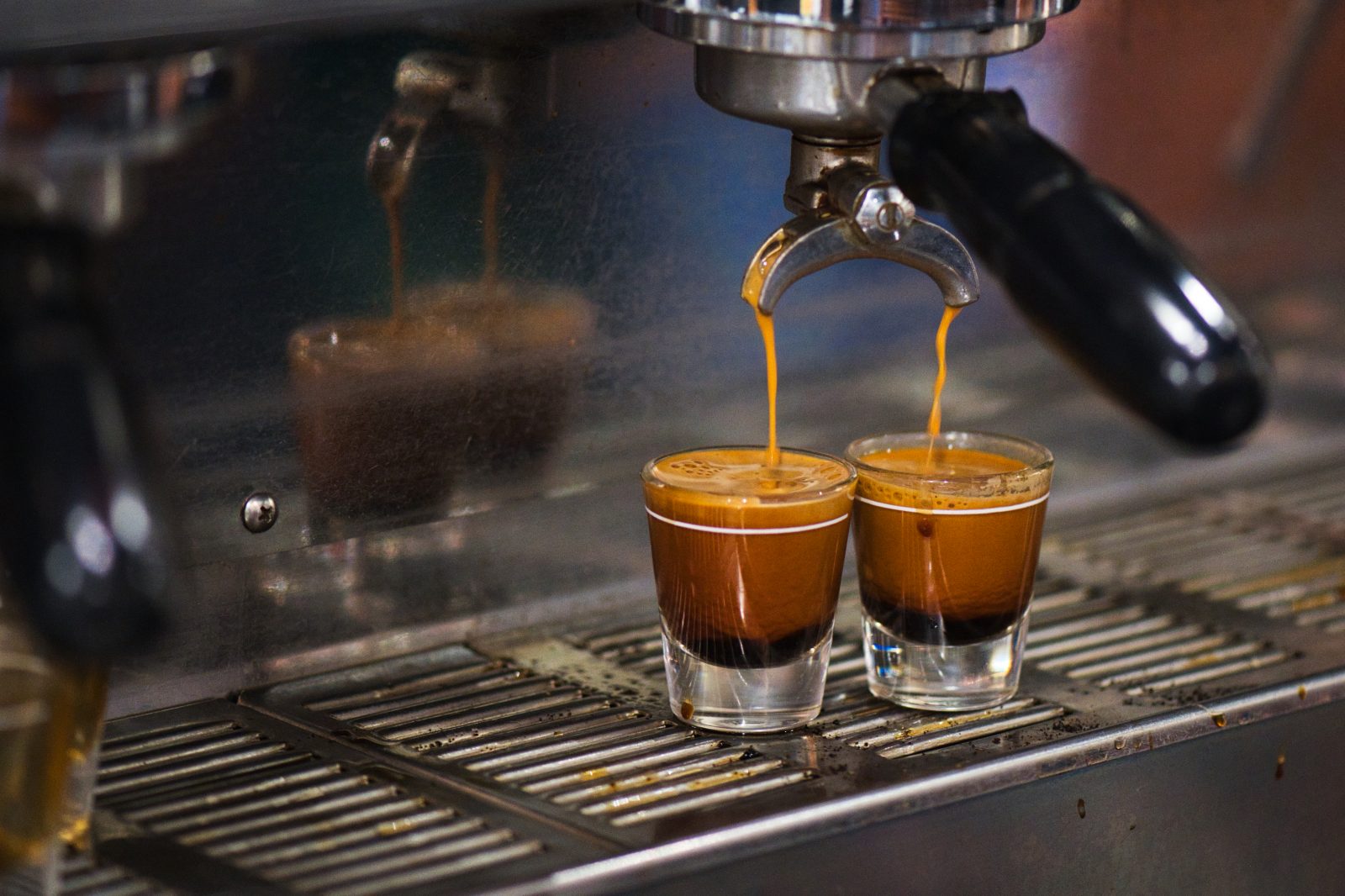
If you have spent time at an espresso bar, you would know what an espresso shot looks like.
Traditionally, a tiny little cup is used, the one where you lift your pinky very high.
The serving size is 50 mm (approximately 1.6 ounces). When prepared properly, it is topped with a thick layer of brown, bubbly crema or the Holy Grail of coffee foam, aka liquid gold.
Fine grounds
The size of the coffee grounds is particularly important after pressure. Therefore, we recommend using fresh medium ground beans with a drip filter or percolator when brewing your coffee.
Coarser grounds can strike a balance between releasing delicious flavors of coffee during a regular brew without wasting or dissolving the particles, as extra saturation in the grind can make the coffee more bitter.
However, espresso is different.
How well the espresso is extracted will depend on the properties of the coffee cake, a.k.a coffee bed. The smaller grind exposes the surface area of the beans to the water. Essentially, more efficient brewing is done through short infusion processes.
Sometimes, grounds that are too fine can clog or slow the brewing process. This is because the coffee bed swells when exposed to water from the pressure and insoluble sugar-based carbohydrates that develop during the roast.
Therefore if you’re brewing espresso, you must balance between small and medium grounds.
The crema
A primary visual indicator of an espresso shot well extracted is this foam, a.k.a liquid gold. Several reactions are believed to take place when pressurized water is forced into the coffee cake:
- Hot water blends with the delicate coffee oils.
- The gas from the beans is released, allowing the carbon dioxide trapped during the roasting process to escape.
- Third, bicarbonate ions undergo chemical changes in the water from being suddenly exposed to an evolving pH of the coffee cake.
- The sudden change from the machine’s high-pressure environment to the cup’s low-pressure environment allows the carbon dioxide to break through the cell walls of espresso and bubble.
These forces come together to create the top layer of the espresso shot. The crema lasts about 40 minutes if your shot is still on the table. Espresso is Italian for expression and was made for you to have it as quickly as possible.
The espresso
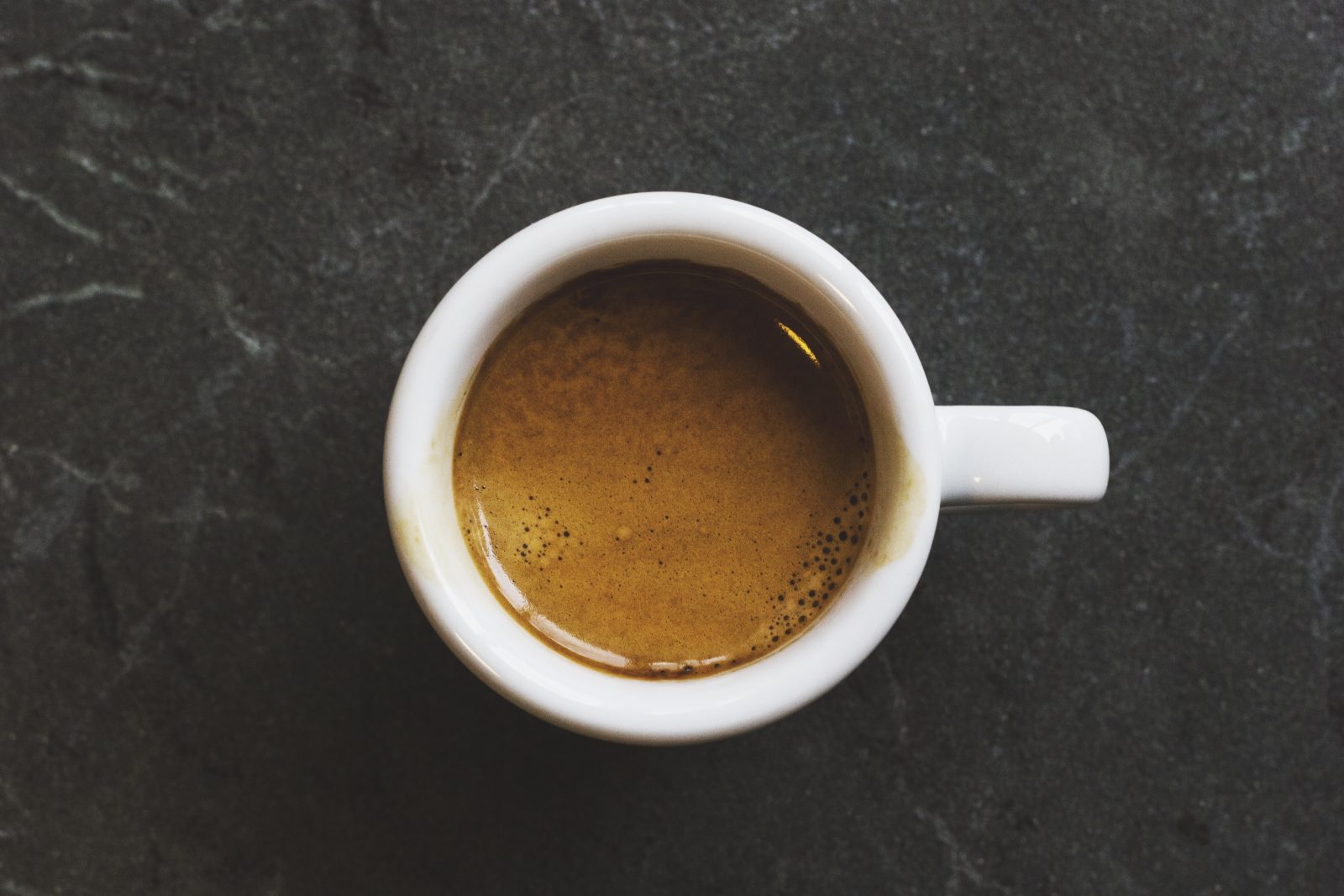
An espresso will have a unique rich taste when it is brewed properly under the crema leaving behind a velvety mouthfeel and aromatic scent. In addition, the shorter period of water exposure allows the beans to retain less acid than other brewing methods, even as it retains 60 to 70% of the caffeine in the final cup.
Therefore despite taking only 30 seconds to brew, an espresso can provide a significant amount of caffeine. It also preserves the volatile and aromatic coffee oils you cannot find in your regular cup of coffee.
How much caffeine does an espresso shot contain?
One double espresso will not impact people’s health, but too much of it definitely can. Insomnia is a known cause of caffeine with the potential to increase symptoms of anxiety. Excessive caffeine is also a cause of high blood pressure.
On the positive side, espresso only has about 60 MG of caffeine per shot which is fewer than one-fourth of the total recommended daily intake. Compare that to 95 mg for every 8 ounces of coffee [people prefer 12 ounces], and you’re getting less than the morning drip-brew.
Having 5 to 7 shots of espresso might cause concerns, whereas consuming it responsibly will, in every likelihood, help you instead of hurting. You need to be conscious of how your body reacts to substances like caffeine and decide to consume or abstain from it accordingly.
Is espresso unhealthy?
No, it is not. However, like black coffee, espresso also has many health benefits than disadvantages. Espresso is high in antioxidants and low in calories which undoubtedly present certain benefits.
Additionally, espresso can improve long-term memory, concentration, and mood. It can also reduce your risk of strokes and type II diabetes. Furthermore, people are using it to boost their workout performance. Therefore it would be safe to assume this beverage is not ruining people’s health.
However, the biggest perk of the espresso is also considered one of its biggest drawbacks: caffeine. Caffeine can provide the highly desired energy boost, but there is a restriction on how much you should drink.
Espresso, your love for coffee
Now you can imagine drinking espresso with a century-old coffee tradition mindset. It’s a tradition and specialty that many don’t think about.
Explore your local espresso offerings because if you’re fortunate, you may find an Italian-style espresso bar in your neighborhood. However, the time to begin experimenting will begin if you find nothing.

Editorial Staff
The editorial staff at Crazy Coffee Crave is a team of coffee enthusiasts & Baristas who enjoy the one thing we all think about as soon as we get up in the morning. Trusted by thousands of readers worldwide.




